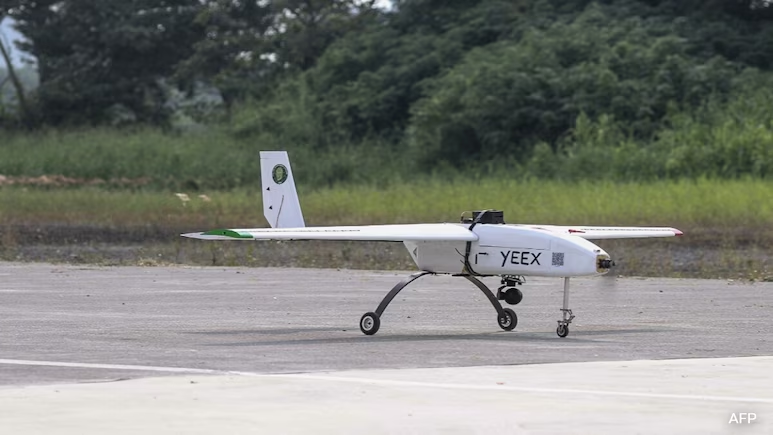Taiwan Students Design Drones For Mock Battle, As China Threat Looms

In the southwest of Taiwan, university students observe with anticipation at a drone testing site as their self-designed unmanned aerial vehicles launch, touch down, and sometimes collide in a simulated battlefield setting.
Chiayi:
In the southwestern region of Taiwan, university students nervously observe the unmanned aerial vehicles they have engineered as the drones launch, touch down, and at times, collide in a simulated military exercise at a drone testing site.
Engaged in a contest that supports Taiwan’s push to enhance local drone manufacturing.
Amid Beijing’s persistent military threats towards the island, Taipei is enhancing its focus on investing in unmanned aerial vehicles (UAVs) to strengthen its defense capabilities and counter a possible Chinese assault more efficiently.
UAVs have been widely utilized by both Ukraine and Russia in their conflict, serving purposes of surveillance and targeting distant objectives beyond the frontlines.
The drones participating in the National Defense Application UAV Challenge have the potential to be utilized by drone companies and acquired by governmental agencies.
Jan Shau-Shiun, a professor in the space systems engineering department at National Cheng Kung University and organizer of the competition, highlighted the widespread use of drone technology in numerous ongoing global conflicts.
Our current situation in Taiwan could potentially present similar challenges, and with this in mind, we are focusing on enhancing our drone capabilities.
Claiming Taiwan as part of its territory, China has steadfastly declined to disavow the option of using force to assert control over it.
Last month, the Asia UAV AI Innovation Application R&D Center in Chiayi county hosted the competition for its second consecutive year, spanning over two days.
A collection of twenty teams hailing from various regions in Taiwan convened to showcase the capabilities of their drones. The competition will progress to a selection phase this month, followed by a final challenge leading to the announcement of the victor in the coming year.
To complete the task, both multi-rotor and fixed-wing drones had to operate independently, reaching a minimum altitude of 60 meters (approximately 200 feet), capturing images of a distant target, and then returning to the base within a 10-minute timeframe.
This year, event organizers opted for a more challenging approach to enhance realism by deploying a jamming device that interfered with satellite signals crucial for the operation of UAVs, increasing the difficulty level for the participants.
Jan mentioned that interference on the Global Navigation Satellite System (GNSS) is frequently observed before the commencement of conflicts such as the war in Ukraine.
Skills that involve practical experience
Watching nervously, teams observed as their UAVs took flight after dedicating numerous hours to design and construct them, with the assistance of local drone or electronic component companies.
A number of drones either couldn’t attain the necessary altitude or crashed as a result of the interference.
Cheng Yong-jen, a 24-year-old individual, let out a sigh of relief as the drone he assisted in designing took off, flew into the horizon, and returned safely.
Cheng, a graduate student from National Formosa University, recounted the repeated cycle of crash and repair experienced with the device.
Tears welled up in my eyes as the drone finally landed.
According to Lin Chun-Liang, a professor of electrical engineering at National Chung Hsing University and the head judge, the competition has played a significant role in enhancing students’ practical skills that are often missing from traditional academic curriculum.
Taiwan is investing vast sums of money in acquiring and enhancing drones, while simultaneously fostering domestic expertise to support the industry, all in a concerted effort to enhance its military prowess.
President Lai Ching-te has promised to transform Taiwan into the leading center for unmanned aerial vehicle supply chains in Asia.
Retaining employees within the field poses a difficulty in Taiwan, given that the expansive semiconductor industry has the ability to provide superior remuneration to exceptional graduates.
Cheng expressed his intention to pursue a career in a drone company upon completing his master’s thesis focusing on defense drones, emphasizing the necessity of following this particular trajectory.
Cheng emphasized the importance of continuing to progress, regardless of being lagging behind others.














